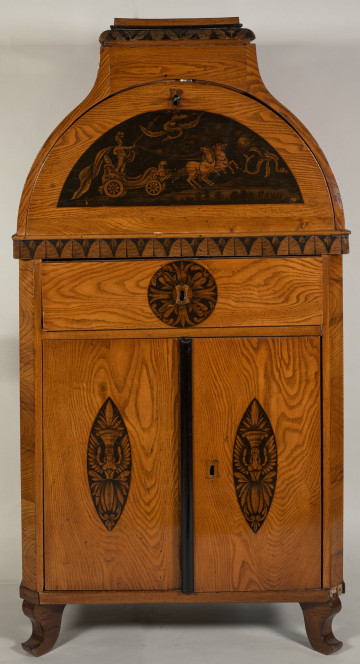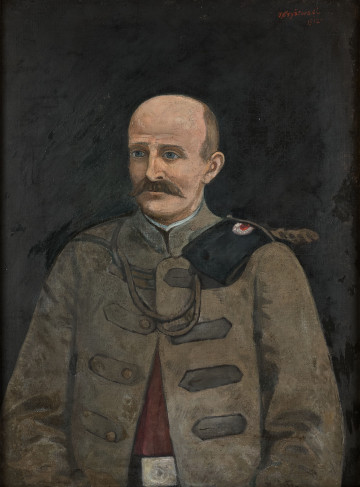
Two-door cabinet
18th-19th century
Castle Museum in Łańcut
Part of the collection: History of the city and the region
Coffee pot It forms a part of a set which also includes a sugar bowl and a milk jug. Coffee made its way to Europe in the 17th century. A Pole who spent ten years in Turkish imprisonment, one Jerzy Kulczycki, contributed to its popularity, having acquired the habit of brewing this „overseas poison”. Having regained freedom through a prisoner exchange, he was employed by John III Sobieski as interpreter for Turkish and confectioner. He accompanied the king during his Vienna expedition, for which the authorities of Vienna gave him permission to establish the first public coffee house, which he opened in 1683. In the 18th century, coffee established itself in Western Europe and ceased being a Turkish extravagancy, becoming the drink of choice of the upper classes. When it reached Poland, initially, as in many other countries, it was considered to be a uniquely distasteful and equally dangerous drink. In the times of Augustus III., coffee „finally made its way from the wealthy to the entire populace (…)”, thus becoming popular and more easily accessible. It was popularised by the periodicals "Monitor" and "Patriota Polski" [The Polish Patriot], guaranteeing that the new drug is not hazardous to health and does not prevent one from working. In citizens’ homes, coffee was served by the lady of the house or a servant. Salon etiquette included serving it to the guests along with cookies. Up until the end of the 19th century, coffee was solved raw, and it had to be roasted on one’s own. Complex machines were used for this, an obligatory piece of equipment in any burgher house. Coffee was drank in the morning or, for taste, with the afternoon snack. Sugar was an obligatory addition to coffee. The sugar bowl that accompanies the pot in the set, is open, and not locked with a key as historic sugar containers were. Joanna Kluz
Author / creator
Dimensions
height: 23.5 cm, width: 21 cm
Object type
History of the city and the region
Technique
cast, welding
Material
metal
Creation time / dating
Creation / finding place
Owner
Castle Museum in Łańcut
Identification number
Location / status

18th-19th century
Castle Museum in Łańcut

20th century
Castle Museum in Łańcut

19th / 20th century
Castle Museum in Łańcut
DISCOVER this TOPIC
National Museum in Lublin
DISCOVER this PATH
Educational path